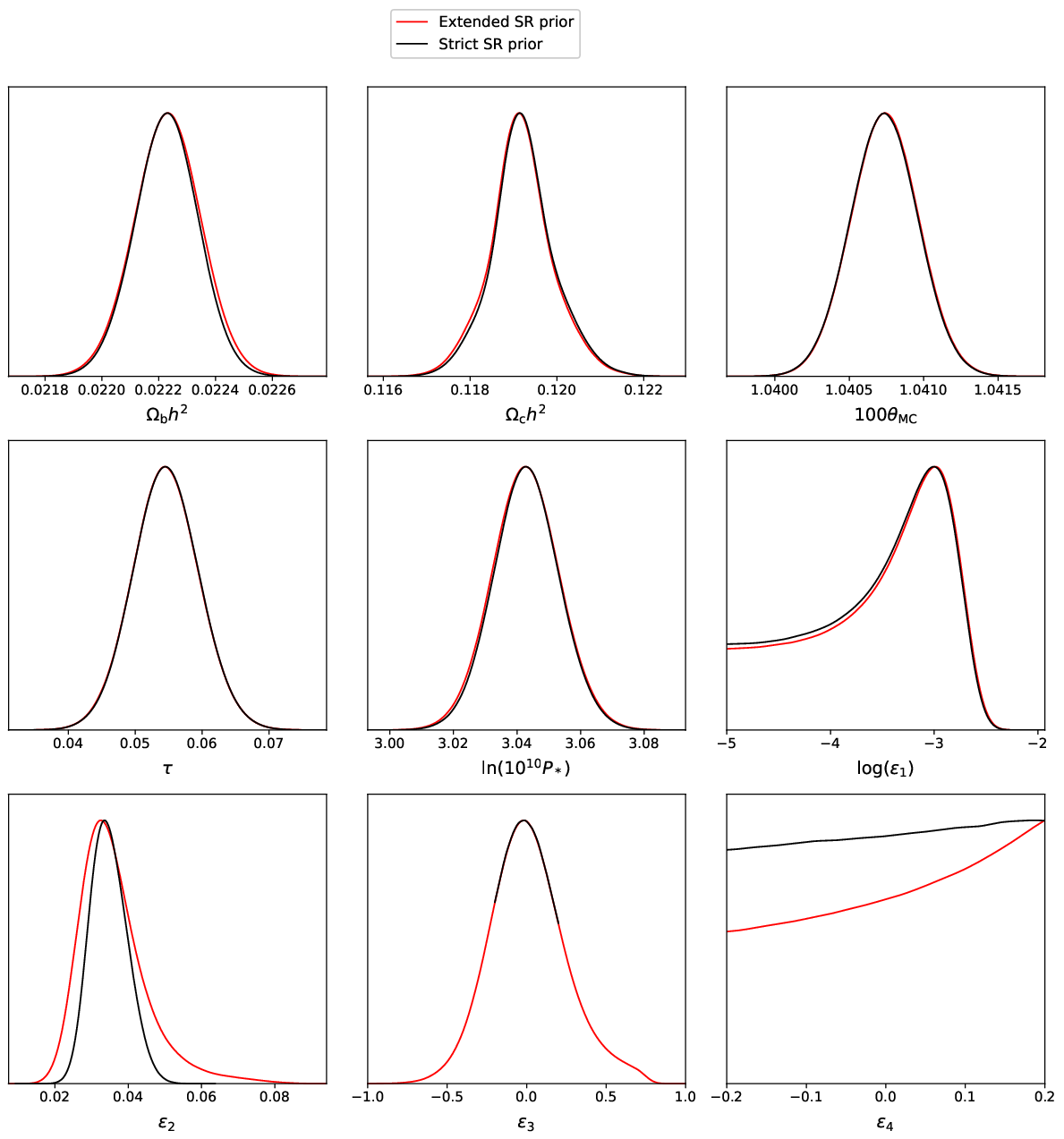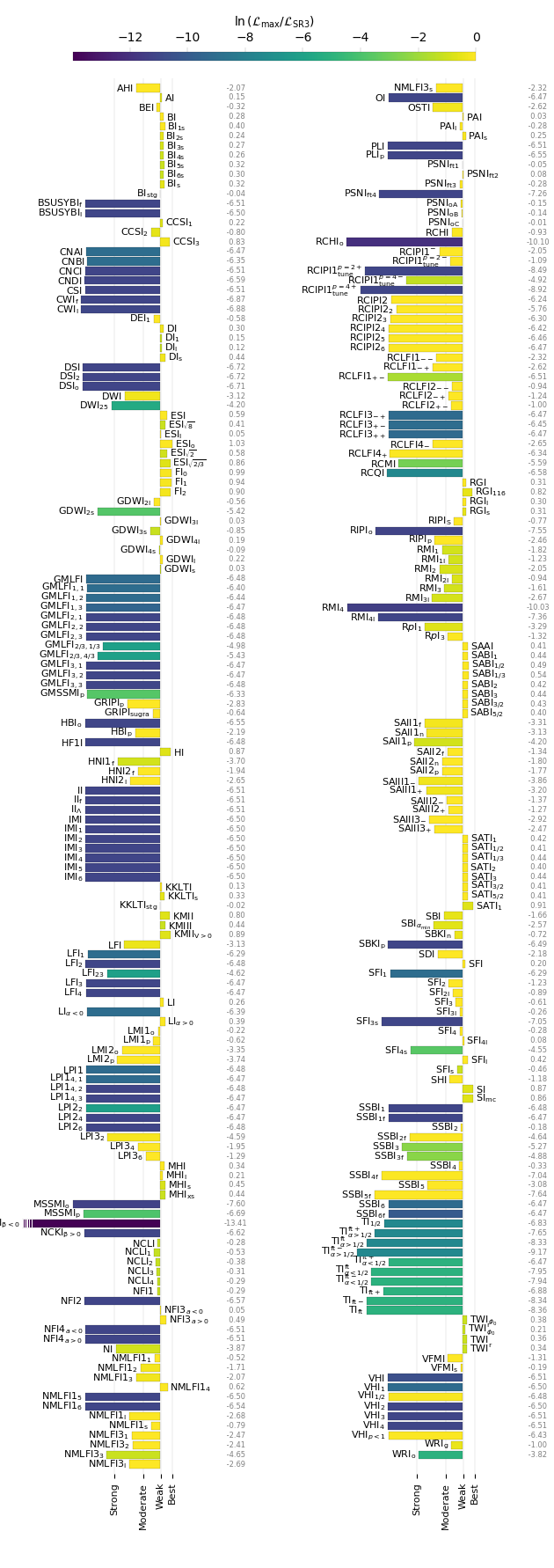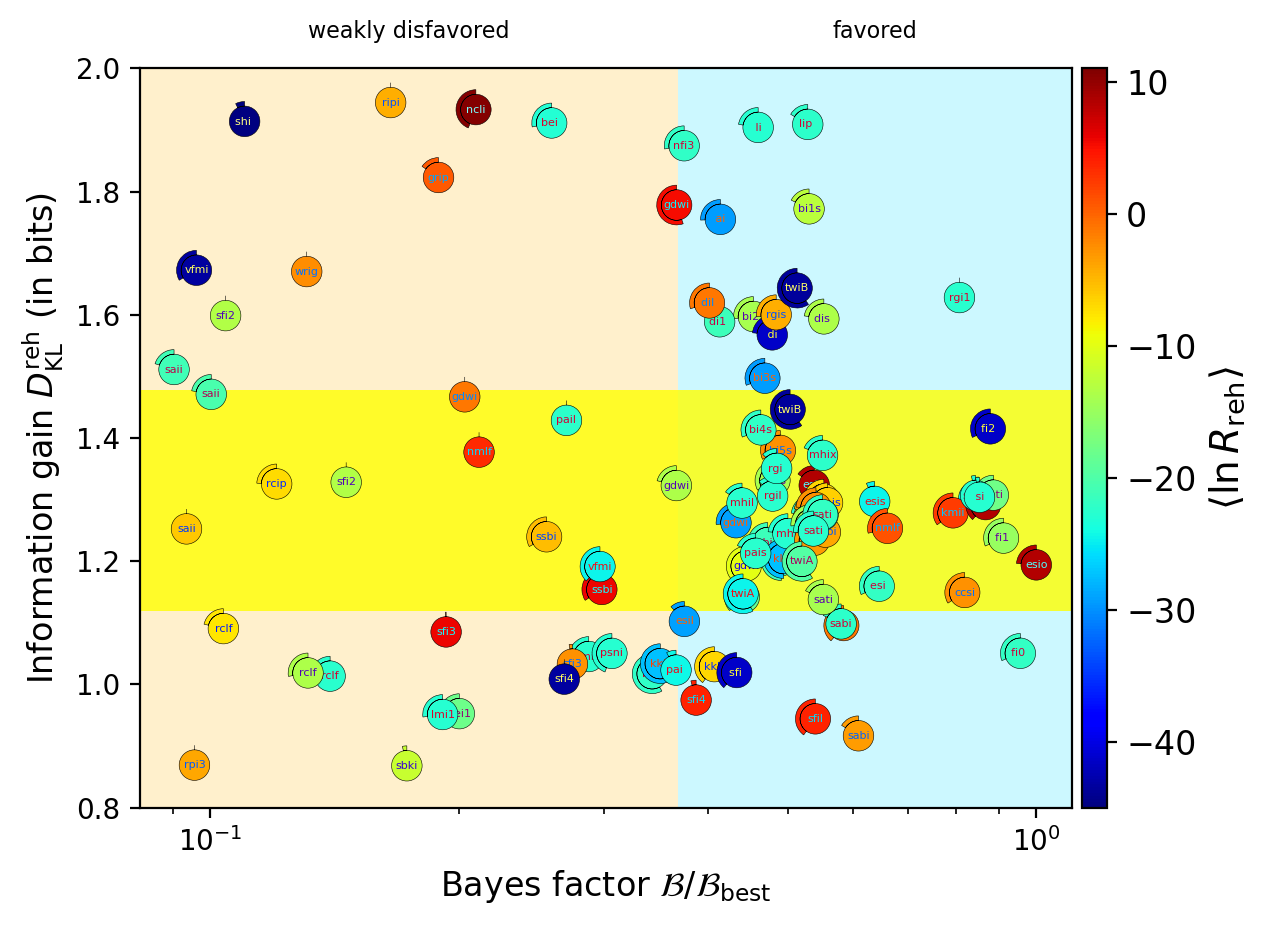What is the status of Cosmic Inflation given the latest cosmological data? In a 80 pages-long publication, we present the first ever data analysis using the third-order slow-roll power spectra complemented by an unprecedented Bayesian model comparison in the landscape of nearly three-hundred models of single-field slow-roll inflation.
In its simplest incarnation, Cosmic Inflation can be realised by a single field rolling down a potential and hundred of different theoretical embeddings have been proposed since the advent of the paradigm. Comparing these models to data could be viewed as Herculean tasks and we have been sharing these enjoyments with Jérôme Martin and Vincent Vennin in the past decade.
In Ref. [1], we present the most recent and strongest constraints on single-field inflation imposed by the latest cosmological data, namely the Planck satellite 2020 Cosmic Microwave Background data, the BICEP/Keck array 2021 polarization measurements, the South Pole Telescope third generation measurements and the full compilation of Baryonic Acoustic Oscillations for the Sloan Digital Sky Survey.
Our analysis incorporates the most accurate theoretical predictions for the quantum fluctuations generated during inflation, the so-called third-order slow-roll spectra for both primordial gravitational waves and curvature fluctuations (see this post). The Bayesian model comparison analysis uses some machine learning tools implementing the methods developed in Ref. [2] and include all the new models presented in the Opiparous Edition of the Encyclopædia Inflationaris.
The following figure shows the one-dimensional marginalised posterior distributions obtained for the inflationary cosmological parameters, i.e., when the cosmic structures are seeded by the inflationary quantum fluctuations.

Notice that the third slow-roll parameter \(\epsilon_3\) is now constrained in a range perfectly consistent with slow-roll and we find
\[-0.44 < \epsilon_3 < 0.55 \quad (95\%\,\texttt{CL}).\]One may also notice the maximum probability for \(\epsilon_1\) at non-vanishing values, showing a weak statistical preference for the presence of primordial gravitational waves in the current data (mostly driven by the BICEP/Keck data). We have
\[\log(\epsilon_1) > 4.9 \quad (95\%\,\texttt{CL}),\]with
\[\log(\epsilon_1) < -2.6 \quad (98\%\,\texttt{CL}).\]The Bayes’ factors and maximum likelihood ratios for all models of the Encyclopædia Inflationaris are:

The reference model is denoted as “SR3” and represents the pure slow-roll analysis assuming no specific potential, only the natural priors for the slow-roll parameters \(\epsilon_i\in[-0.2,0.2]\). Bars extended to the left mean the models are models, they are favoured when the bar is extended to the right (with respect to agnostic slow-roll). The bottom labels give the Jeffreys’ scale of Bayesian evidence with respect to the best model. We find that \(40\%\) of all scenarios can be considered ruled-out (strongly disfavoured according to the Jeffreys’ scale) whereas \(20\%\) of the models are most probable given the current data.
Our approach also allows us to constrain the reheating epoch, the transition period between cosmic inflation and the hot Big-Bang phase in which the universe is a relativistic plasma.
The following figures are scattered plots of inflationary models positioned according to their Bayesian evidence (horizontal axis) and the information gain on the reheating epoch (vertical axis). The colour scale traces the mean value (over its posterior) of the reheating parameter \(\ln R_\mathrm{reh}\).


Each model is also encircled in a gauge counting the number of unconstrained model parameters (derived using Bayesian dimensionality). Non-encircled models are models for which all parameters are constrained by the data, models with a full circle around have all their parameters unconstrained (which are then superfluous to fit the data). As such, the most probable and most efficient models are those on the right having no circle around.
Weighted over the landscape, we find that the current data constrain the kinematics of reheating by \(1.3\) bits. The precision reached by the current cosmological data is such that almost half of the inflationary landscape is out of the game, but, also, for each of the favoured models, the way the universe reheated to become a plasma can now be inferred by astrophysical and cosmological observations. We are talking here of an epoch of the universe being, at least, at redshift \(z > 10^{10}\)!
The future is bright and we are looking forward to the Euclid satellite measurements (see also this post).